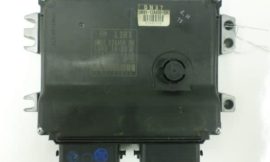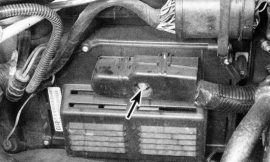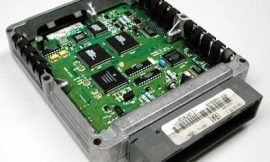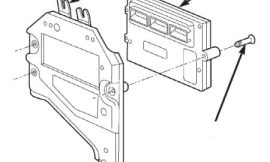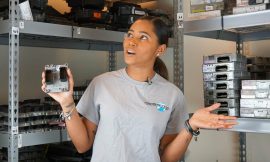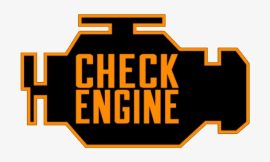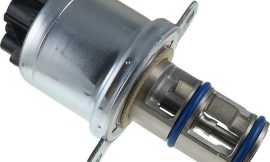Last updated on November 1st, 2024 at 11:48 am
The Acura Vigor, a reigning symbol of automotive excellence, traces its roots back to the early 1990s. Produced by Honda as a luxury sedan, the Vigor model was a hallmark of innovation and performance. Its unique five-cylinder engine, luxurious amenities, and sleek design set it apart in the competitive automotive market.
At the heart of the Acura Vigor’s performance is the Electronic Control Unit (ECU). The ECU, similar to the ECM (Engine Control Module) and PCM (Powertrain Control Module), is fundamentally the brain of the vehicle. It oversees a wide range of functions, from engine timing and fuel mixture to emission control, ensuring optimal performance and efficiency. The ECU’s ability to seamlessly manage and coordinate these complex processes was key to the Vigor’s reputation for reliability and superior performance.
Functions of the ECU in the Vigor
The ECU in the Acura Vigor was designed to monitor and control various systems in the vehicle, including fuel injection, ignition timing, idle speed control, and exhaust gas recirculation. It continuously collects data from sensors placed throughout the car and uses this information to make real-time adjustments to maximize performance and efficiency. By precisely regulating these essential functions, the ECU ensures a smooth ride, enhanced fuel economy, and reduced emissions.
Beyond its primary functions, the ECU also plays a crucial role in the safety features of the Acura Vigor. In case of an emergency, it receives signals from the sensors to trigger airbag deployment or activate braking systems. This feature helps to keep drivers and passengers safe in potentially dangerous situations.
Benefits of a Well-Functioning ECU

A well-functioning ECU in your Acura Vigor brings numerous benefits, particularly in terms of fuel efficiency and safety features. When the ECU precisely controls the fuel injection system and ignition timing, it ensures optimal fuel economy. This not only reduces your visits to the gas station, but also contributes to environmental sustainability through lower emissions.
As for safety, the ECU’s role cannot be overstated. Its ability to receive signals from various sensors and act upon them in real-time can make all the difference in a critical situation. For instance, in the event of a collision, the ECU swiftly triggers airbags and activates necessary safety measures to protect occupants. Additionally, it also regulates the anti-lock braking system (ABS), contributing to safer braking under challenging road conditions. A robust and effective ECU, therefore, is not just about enhancing your Vigor’s performance, but also about ensuring a safer and more efficient driving experience.
Performance Management: The ECU monitors the engine’s key functions, such as fuel injection and ignition timing, to enhance the vehicle’s performance. It ensures a smooth ride and maximizes fuel efficiency by making real-time adjustments based on sensor data.
- Emission Control: Through precise regulation of engine functions, including exhaust gas recirculation, the ECU aids in reducing the vehicle’s emission levels, contributing to environmental sustainability.
- Safety Functions: The ECU plays a pivotal role in managing safety features like airbag deployment and the anti-lock braking system. It promptly reacts to sensor signals during emergencies, providing an additional layer of protection for drivers and passengers.
- Efficiency: By ensuring optimal fuel economy through precise control of fuel injection and ignition systems, the ECU helps minimize frequent visits to the gas station, making your Acura Vigor more cost-effective to run.
In conclusion, the ECU is at the heart of your Acura Vigor’s performance, efficiency, and safety, underscoring its indispensable role in your vehicle’s operation.
DIAGNOSTIC TROUBLE CODES THAT RELATES TO THE PCM
Diagnostic Trouble Codes (DTCs) are codes that are stored by a vehicle’s on-board diagnostic (OBD) system when it detects a fault with the vehicle’s powertrain system.
P0100: Mass or Volume Air Flow Circuit Malfunction
P0101: Mass or Volume Air Flow Circuit Range/Performance
P0102: Mass or Volume Air Flow Circuit Low Input
P0103: Mass or Volume Air Flow Circuit High Input
P0110: Intake Air Temperature Circuit Malfunction
P0113: Intake Air Temperature Sensor 1 Circuit High
P0172: System Too Rich (Bank 1)
P0120: Throttle/Pedal Position Sensor/Switch “A” Circuit Malfunction
P0130: Oxygen Sensor Circuit Malfunction (Bank 1, Sensor 1)
P0131: Oxygen Sensor Circuit Range/Performance (Bank 1, Sensor 1)
P0132: Oxygen Sensor Circuit High Voltage (Bank 1, Sensor 1)
P0133: Oxygen Sensor Circuit Slow Response (Bank 1, Sensor 1)
P0134: Oxygen Sensor Circuit Intermittent (Bank 1, Sensor 1)
P0135: Oxygen Sensor Circuit Malfunction (Bank 1, Sensor 2)
P0136: Oxygen Sensor Circuit Range/Performance (Bank 1, Sensor 2)
P0137: Oxygen Sensor Circuit Low Voltage (Bank 1, Sensor 2)
P0138: Oxygen Sensor Circuit High Voltage (Bank 1, Sensor 2)
P0139: Oxygen Sensor Circuit Intermittent (Bank 1, Sensor 2)
P0140: Oxygen Sensor Circuit Malfunction (Bank 2, Sensor 1)
P0141: Oxygen Sensor Circuit Range/Performance (Bank 2, Sensor 1)
P0142: Oxygen Sensor Circuit Low Voltage (Bank 2, Sensor 1)
P0143: Oxygen Sensor Circuit High Voltage (Bank 2, Sensor 1)
P0144: Oxygen Sensor Circuit Intermittent (Bank 2, Sensor 1)
Here is a list of some diagnostic trouble codes (DTCs) that begin with the letter “U” and could potentially indicate a fault with the powertrain control module (PCM) in a vehicle:
U0100: Lost Communication with Engine Control Module/Powertrain Control Module
U0101: Lost Communication with Transmission Control Module
U0102: Lost Communication with Transfer Case Control Module
U0103: Lost Communication with Throttle Actuator Control Motor Circuit
U0104: Lost Communication with Throttle Actuator Control Motor Circuit Range/Performance
U0105: Lost Communication with Throttle Actuator Control Motor Circuit Low
U0106: Lost Communication with Throttle Actuator Control Motor Circuit High
U0107: Lost Communication with Throttle Actuator Control Motor Circuit Intermittent
U0108: Lost Communication with Throttle Actuator Control Motor Circuit Open
U0109: Lost Communication with Throttle Actuator Control Motor Circuit Short to Ground
U0110: Lost Communication with Throttle Actuator Control Motor Circuit Short to Battery
U0111: Lost Communication with Throttle Actuator Control Motor Circuit Short to Power
U0112: Lost Communication with Throttle Actuator Control Motor Circuit Short to Ground
U0113: Lost Communication with Throttle Actuator Control Motor Circuit Short to Battery
U0114: Lost Communication with Throttle Actuator Control Motor Circuit Short to Power
U0115: Lost Communication with Throttle Actuator Control Motor Circuit Failure
U0116: Lost Communication with Throttle Actuator Control Motor Circuit Range/Performance
Note: These codes are just a small sample and there are many other DTC codes that could potentially indicate a fault with the PCM. Additionally, the specific codes that are relevant will depend on the make and model of the vehicle. It is important to consult the vehicle’s service manual or a professional mechanic for more information about interpreting DTC codes.



